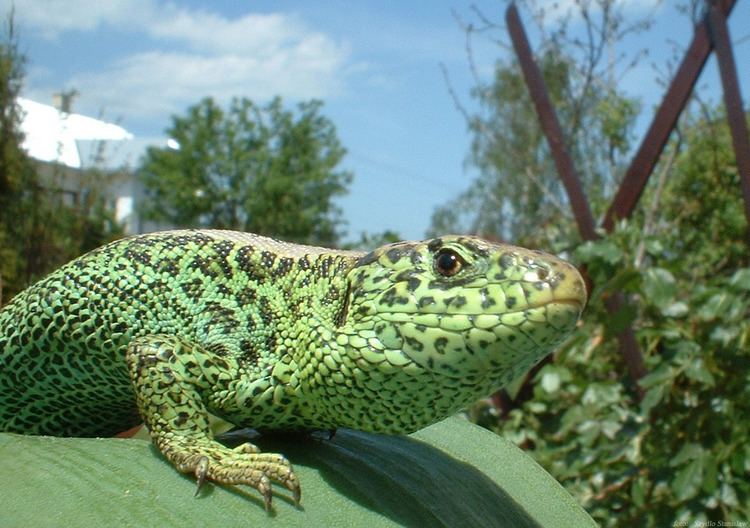Class Reptilia | Phylum Chordata | |
 | ||
Superfamily LacertoideaOppel, 1811 Similar Anguimorpha, Scincomorpha, Dibamidae, Diploglossidae, Xenosauridae | ||
The Lacertoidea is a group of lizards that includes the Lacertidae, Teiidae, Gymnophthalmidae, and the burrowing Amphisbaenia.
Studies of anatomy have traditionally grouped the lacertoids with skinks; however, more recent studies focusing on DNA have placed them as a distinct group of lizards, more closely related to the venomous Toxicofera. The relationships of the Amphisbaenia to other lizards have long been a mystery; although superficially snakelike, their anatomy and locomotion is quite distinct from that of snakes. However, they do not closely resemble any other group of lizards. Recent molecular studies suggest that amphisbaenians are grouped with the Lacertidae, in a group named the Lacertibaenia.
Lacertoids have a wide geographic distribution. The Lacertidae are found throughout Europe and Asia, with a major radiation endemic to Africa. The Teiidae are diverse in South America, but some members of the group occur in southern North America as well. The Amphisbaenia are especially widespread, occurring in North America, Europe, Africa, South America, and the Caribbean. The origins of the group are unclear. The oldest definitive lacertoid is the amphisbaenian Plesiorhineura, from the early Paleocene of North America. Given that it resembles modern worm lizards, the lacertoids most likely appeared and diversified in the Cretaceous.
